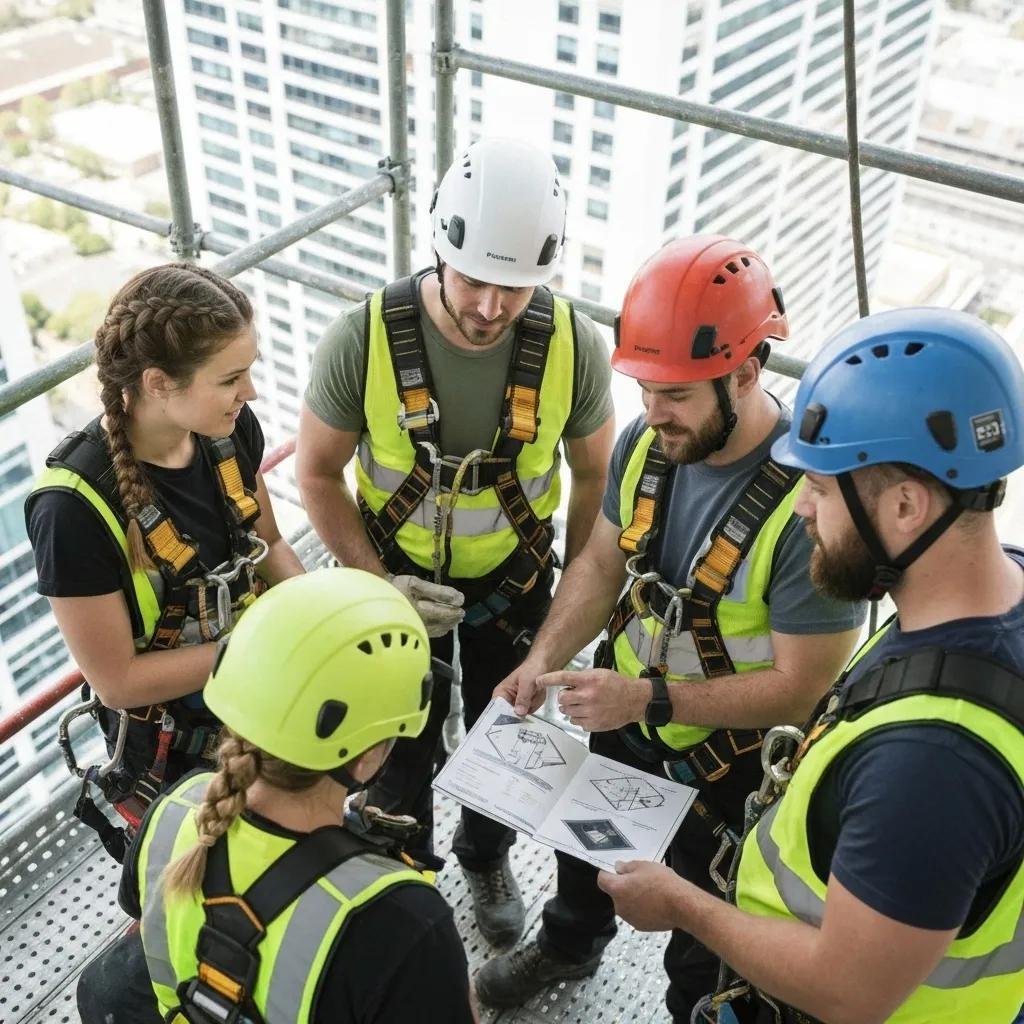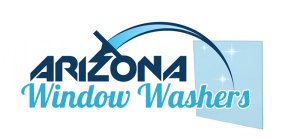
The methods we use for commercial window cleaning are key to keeping your building looking sharp and maintaining its appeal, no matter the height or surface. Choosing the right cleaning approach doesn’t just keep your glass in top shape; it also boosts your brand’s image, ensures everyone’s safety, and saves you money in the long run. This guide will walk you through why professional commercial window cleaning is a must, what to look for when picking a method, the different techniques available, a breakdown of their pros and cons, essential safety rules and OSHA guidelines, how to figure out costs, and how Arizona Window Washers brings unmatched local know-how to Phoenix businesses. For dependable results and clear pricing, check out Clean D Windows – Top AZ Commercial Window Cleaning Company, where high-rise expertise meets outstanding service.
Why Professional Commercial Window Cleaning is a Game-Changer for Your Property
Professional commercial window cleaning brings together specialized gear, skilled pros, and top industry practices to give you sparkling, streak-free windows, better safety, and peace of mind knowing you’re meeting all the rules.
What Are the Big Wins from Commercial Window Washing?
Before we dive into the nitty-gritty of techniques, let’s look at the main perks of having your building’s exterior professionally cleaned:
- A stunning first impression with spotless, streak-free windows that draw in tenants and customers.
- More natural light flooding in and better energy efficiency thanks to the removal of stubborn grime and mineral buildup.
- Longer life for your windows, preventing etching, corrosion, and seal breakdown.
- Reduced risks with certified safety procedures and fall protection systems in place.
These advantages are the foundation for boosting your property’s value and making operations run smoother.
Why Your Business Needs Professional Window Cleaning
Professional window cleaning offers a wealth of benefits for businesses, starting with a polished building appearance that makes a fantastic first impression. It also contributes to a more productive and happier workforce by maximizing natural light. Plus, regular cleaning actually saves you money by extending the life of your windows and improving energy efficiency, all while enhancing curb appeal and property value.
This research directly backs up our points about how professional commercial window washing benefits your business’s image, property value, and overall operational efficiency.
How Do Clean Windows Elevate Your Business Image and Property Value?
Crystal clear, well-kept windows project an image of professionalism, show you pay attention to the little things, and make your interiors feel more welcoming. Every gleaming pane acts like a visual advertisement for your brand, helping to keep tenants happy and potentially increasing your property’s resale or lease value by up to 5%. Keeping your glass pristine aligns with what investors expect and sets the standard for your neighborhood.
Why is Regular Window Cleaning Key for Durability and Safety?
Consistent cleaning stops abrasive particles—like dust, pollution, and bird droppings—from becoming permanently etched into the glass. Over time, these contaminants can cause tiny scratches that weaken seals and reduce thermal performance. Furthermore, scheduled maintenance includes vital safety checks of anchor points and equipment, significantly lowering the chances of accidents and avoiding hefty fines.
What Should You Consider When Picking a Commercial Window Washing Technique?
How Do Building Height and Accessibility Influence Your Choice of Technique?
The height of your building and the complexity of its exterior directly dictate the equipment needed:
- For buildings that are 1 to 3 stories high, traditional squeegee methods work great.
- Mid-rise structures, typically 4 to 10 stories, benefit most from water-fed pole systems.
- For towering high-rises (10+ stories), you’ll need rope access, aerial lifts, or Building Maintenance Units (BMUs).
Carefully checking roof tie-off points, ledges, and window recesses ensures our technicians can reach every spot safely, paving the way for the best technique selection.
What Role Do Window Type and Condition Play in Technique Selection?
The kind of glass (tinted, solar-control, laminated) and the frame material (aluminum, vinyl, wood) will guide the choice of cleaning solutions and tools:
- Glass with sensitive coatings needs pure-water systems to prevent any chemical damage.
- If seals are failing prematurely, it’s a sign that low-pressure, non-abrasive methods are required.
- Specialty glass like decorative or stained glass might need specific detergents and very soft brushes.
Understanding the condition of your building’s surfaces is crucial to avoid accidental damage and achieve the clearest possible finish.
How Do Budget and How Often You Need Service Affect Your Decision?
It’s all about finding the right balance between cost, performance, and scheduling:
- One-time projects often use pricing models based on hourly rates or per window.
- Ongoing maintenance contracts usually come with discounted rates and make budgeting predictable.
- More frequent cleaning programs mean less intensive work during each visit, bringing down the average cost per window.
Weighing the initial investment against long-term savings will help you determine the most effective service schedule.
Why Are Safety and OSHA Compliance Absolutely Critical When Choosing a Method?
Strictly following OSHA’s fall protection and scaffolding regulations is paramount for protecting workers and property owners. Techniques that minimize overhead rigging, like water-fed poles, reduce fall risks. High-rise methods, on the other hand, require certified rope-access technicians and thoroughly documented safety plans. Failing to comply can lead to costly fines, project delays, and damage to your reputation.
How Does Environmental Impact Factor into Your Technique Choice?
Going green with cleaning systems that use purified water without harsh chemicals means no worries about runoff and aligns with sustainable building practices. Water-fed pole cleaning conserves resources by recycling rinse water, while traditional detergent methods might require biodegradable formulas and careful containment. Prioritizing sustainability can significantly boost your company’s corporate social responsibility profile.
What Are the Main Commercial Window Cleaning Techniques Available?
How Does the Traditional Squeegee and Scrubber Method Work?
- Prep Work – Mix your cleaning solution and check your tools.
- Apply Cleaner – Scrub each pane to lift away dirt and grime.
- Squeegee Off – Use squeegee strokes to remove water and residue, leaving a clear finish.
- Finishing Touches – Wipe down edges and corners with clean cloths.
This hands-on approach is still a cost-effective choice for ground-level storefronts and interior glass cleaning. Its straightforward nature allows for quick setup, but it might not be the most efficient for taller buildings.
What Are the Benefits and Uses of Water-Fed Pole Systems?
Water-fed pole systems use purified water pumped through extendable poles equipped with brush heads. Because the water is purified, it has very few minerals, allowing it to clean without leaving streaks or requiring chemicals.
- Perfect for mid-rise buildings and windows that are hard to reach.
- Cuts down on labor costs by eliminating the need for ladders and lifts.
- Boosts safety by allowing cleaning to be done from ground level.
The purified water effectively lifts surface dirt and evaporates cleanly, providing an environmentally friendly finish that can meet LEED standards.
How Is Rope Access Used for High-Rise Window Cleaning?
- Harnesses, backup systems, and thorough anchor inspections guarantee fall protection.
- Bosun chairs and specialized descent control devices offer comfortable and secure positioning.
- This method is ideal for buildings with intricate designs where lifts can’t be used.
Rope access minimizes the equipment needed on the ground while allowing for precise cleaning techniques on even the tallest skyscrapers.
What Role Do Aerial Work Platforms Like Boom Lifts Play?
- These are great for mid- to high-rise floors when there’s enough clear space at the base for setup.
- They can be used with squeegee, brush, and water-fed pole attachments.
- They allow multiple crew members to work at the same time, increasing efficiency.
While platforms require access space, sufficient ground load-bearing capacity, and room to maneuver, they provide efficient coverage over large surface areas.
How Are Emerging Technologies Like Drones and Robotics Changing the Industry?
Drones fitted with sprayers and brushes can handle initial dirt removal on low- to mid-rise buildings, reducing the risks for human workers. Robotic window cleaners, which attach to surfaces with suction pads, can automate the cleaning of repetitive building facades, especially in industrial settings. Although still developing, these technologies hold the promise of lower labor costs and improved safety where traditional methods are difficult to apply.
Designing and Developing High-Rise Window Cleaning Drones
The development of drones for high-rise window cleaning is focused on enhancing safety for window washers by enabling them to operate from ground level. These hexacopter-based systems are engineered to clean the windows of tall buildings more rapidly and with fewer personnel than conventional methods, presenting an economically sound and efficient solution for commercial window upkeep.
This academic paper directly supports our discussion on new technologies like drones and robotics, highlighting their role in making commercial window cleaning safer and more efficient.
How Do Commercial Window Washing Techniques Compare: Which Is Best for Your Business?
Choosing the perfect method depends on your building’s profile, your budget, safety standards, and environmental goals. The table below breaks down each technique by its key features and typical cost factors.
Here’s a comparative look at commercial window washing methods, organized by what they’re best suited for, their advantages, disadvantages, and their approximate relative cost.
| Technique | Best For | Advantages | Drawbacks | Cost Factor |
|---|---|---|---|---|
| Traditional Squeegee | Low-rise storefronts | Low equipment cost; simple setup | Labor-intensive; limited reach | Low |
| Water-Fed Pole System | Mid-rise exteriors | Streak-free finish; ground-based safety | Initial equipment investment; water purification system | Moderate |
| Rope Access | High-rise façades | Minimal footprint; adaptable to complex geometries | Requires certified technicians; slower coverage | High |
| Aerial Work Platforms | Mid/High-rise with clear base | Multi-operator efficiency; stable platform | Access constraints; rental costs | High |
| Drone/Robotic Cleaning | Specialized industrial zones | Reduces human exposure; scalable automation | Emerging tech; regulatory hurdles | Variable |
What Are the Pros and Cons of Each Cleaning Technique?
Beyond the table, consider these important trade-offs:
- Traditional Squeegee – Easy to get started, but requires more labor and carries safety risks with ladders.
- Water-Fed Pole – It’s eco-friendly and safe, though the initial investment in equipment can be substantial.
- Rope Access – Extremely versatile for tall buildings, but demands strict safety protocols and highly trained technicians.
Which Techniques Are Best Suited for Different Building Types?
Different structures call for specific approaches:
- Retail spaces and small offices – Traditional methods get the job done quickly.
- Multi-story parking garages and apartment buildings – Water-fed poles offer a great combination of reach and safety.
- High-rise corporate towers – Rope access or BMUs are the most efficient ways to cover large areas without ground obstructions.
On-site assessments and detailed window inventories help guide the final method selection.
How Do Costs Vary Across Different Window Cleaning Methods?
Pricing is influenced by the equipment used, the skill level of the labor, the risks associated with height, and how often the service is performed:
- Per-window rates are most suitable for low-rise jobs with a predictable number of panes.
- Hourly billing works well for buildings with irregular shapes where estimating the exact number of windows is difficult.
- Project-based contracts can bundle cleaning, inspections, and minor repairs into one package.
What Safety Considerations Differ Between Techniques?
The risk profile changes depending on the method used:
- Manual squeegee work requires strict ladder safety and the use of spotters.
- Water-fed poles reduce height-related dangers but necessitate regular pole strength testing.
- Rope access mandates certified anchor points, backup systems, and regular inspections of fall-arrest equipment.
What Safety Measures and OSHA Regulations Should You Know for Commercial Window Cleaning?
Understanding OSHA standards and the required Personal Protective Equipment (PPE) is fundamental for safe operations.
What Are the OSHA Standards for Commercial Window Cleaning?
OSHA’s mandates include fall protection guidelines (29 CFR 1926 Subpart M), scaffolding regulations (Subpart L), and aerial lift safety rules (Subpart D). These regulations specify requirements for guardrail heights, anchor load capacities, and platform stability. Staying compliant ensures worker protection and helps maintain eligibility for project insurance.
Latest OSHA Regulations for Window Cleaning Anchors & Rope Descent Systems
OSHA regulations lay out critical safety standards for commercial window cleaning, particularly for accessing high-rise buildings. These rules detail the requirements for anchor systems, equipment load capacities (e.g., 5,000 pounds for RDS components), and the necessity of separate fall arrest systems for each worker. Compliance is key to ensuring worker safety and adhering to safety protocols for suspended access methods.
This source provides specific details on OSHA regulations and safety protocols, directly verifying the information in our section on safety measures and compliance for commercial window cleaning.
Which Personal Protective Equipment (PPE) Is Required?
The essential PPE for window cleaning includes:
- Full-body harnesses with shock-absorbing lanyards
- Hard hats designed to protect against falling objects
- Footwear that is slip-resistant and puncture-resistant
- Gloves made of chemical-resistant material for handling detergents
Equipping your teams with certified gear minimizes exposure to hazards and ensures you meet regulatory requirements.
How Are Fall Protection and Risk Assessments Implemented?
Before starting any job, a written fall protection plan must clearly outline:
- Hazard Evaluation: Identifying risks related to height, weather conditions, and surface stability.
- Equipment Selection: Choosing the right gear based on the job’s height and the technique being used.
- Rescue Procedures: Establishing clear steps for rescue in case of suspension trauma.
Documenting these assessments and equipment checks strengthens your safety culture and satisfies audit requirements.
What Specialized Training Is Needed for Rope Access and High-Rise Cleaning?
Technicians must complete certification programs, such as those from IRATA or SPRAT, which cover:
- Proper rope rigging and the use of backup systems
- Controlled descent techniques and rescue strategies
- Anchor inspection procedures and load calculations
Regular refresher training ensures that skills remain sharp and compliant with the latest standards.
How Can You Understand and Estimate Commercial Window Cleaning Costs?

Clear and transparent cost estimation is key to building trust and helping property owners budget effectively.
What Factors Influence Commercial Window Cleaning Pricing?
The main elements that affect pricing include:
- The number and size of the window panes
- The building’s height and how easy or difficult it is to access
- How often the service is performed
- The type of equipment and the skill level of the labor required
- Seasonal factors and potential weather-related scheduling adjustments
Understanding these factors will help you make sense of quotes and avoid unexpected charges.
How Are Prices Calculated: Per Window, Hourly, or Project-Based?
Pricing models are adapted to the specifics of each site:
- Per-window rates are most effective for jobs with a consistent number of panes.
- Hourly billing is suitable for buildings with irregular designs or when unforeseen issues might arise.
- Project-based contracts can cover a comprehensive package including cleaning, minor repairs, and inspections.
How Does Building Height and Frequency Affect Cost Estimates?
Higher buildings generally mean higher labor risk premiums, while more frequent cleaning reduces the labor intensity of each individual visit. Opting for monthly or quarterly programs takes advantage of efficiencies gained from repeat business, often lowering the average cost per pane by 10–20%.
Where Can You Get Accurate Commercial Window Cleaning Quotes?
It’s best to connect with a trusted local provider who can conduct on-site assessments and provide clear, detailed proposals. For a thorough, no-obligation estimate customized to your property’s specific needs, reach out to the team at Arizona Window Washers. Their expertise in the Phoenix area ensures precise and competitive pricing.
Why Choose Arizona Window Washers for Your Commercial Window Cleaning Needs?
Arizona Window Washers combines in-depth knowledge of the local market, strict adherence to safety standards, and cost-effective service packages specifically designed for Phoenix commercial properties.
What Unique Value Propositions Does Arizona Window Washers Offer?
Our unique selling points include:
- Expertise in high-rise buildings, featuring IRATA-certified rope access crews
- Advanced purified water systems for eco-friendly, spotless results
- Transparent pricing with detailed project proposals
- Over 15 years of dedicated service throughout Phoenix, Scottsdale, Tempe, and Mesa
- Comprehensive exterior cleaning services that go beyond windows, including façades and awnings
These strengths translate into unmatched reliability and superior quality for your property.
How Does Local Phoenix Market Expertise Benefit Your Property?
Our familiarity with the regional climate, water quality, and local regulations allows us to fine-tune cleaning schedules, select the best solutions for hard water stains, and efficiently meet HOA requirements. Our deep community ties ensure quick response times and smooth coordination with property managers.
What Safety and Quality Standards Does Arizona Window Washers Follow?
We strictly follow OSHA fall-protection regulations, conduct daily equipment inspections, and hold regular training refreshers. Every project includes documented risk assessments, rescue plans, and quality control checks to guarantee safe operations and outstanding results.
How Can You Contact Arizona Window Washers for a Quote or Service?
To arrange an on-site consultation or request a detailed cleaning proposal, please call us at (602) 555-1234 or complete the online form at arizonawindowwashers.com/contact. Our customer-focused team provides prompt follow-up and creates customized service packages to fit your budget and timeline.
Reliable commercial window washing is essential for maintaining your property’s appearance, ensuring occupant safety, and protecting your investment. By carefully considering key factors—like building height, window type, budget, safety needs, and environmental impact—you can choose the most effective technique, from classic squeegees to cutting-edge robotics. Partnering with Arizona Window Washers means your facility will benefit from proven expertise, strict OSHA compliance, and transparent pricing tailored specifically for the Phoenix area.
